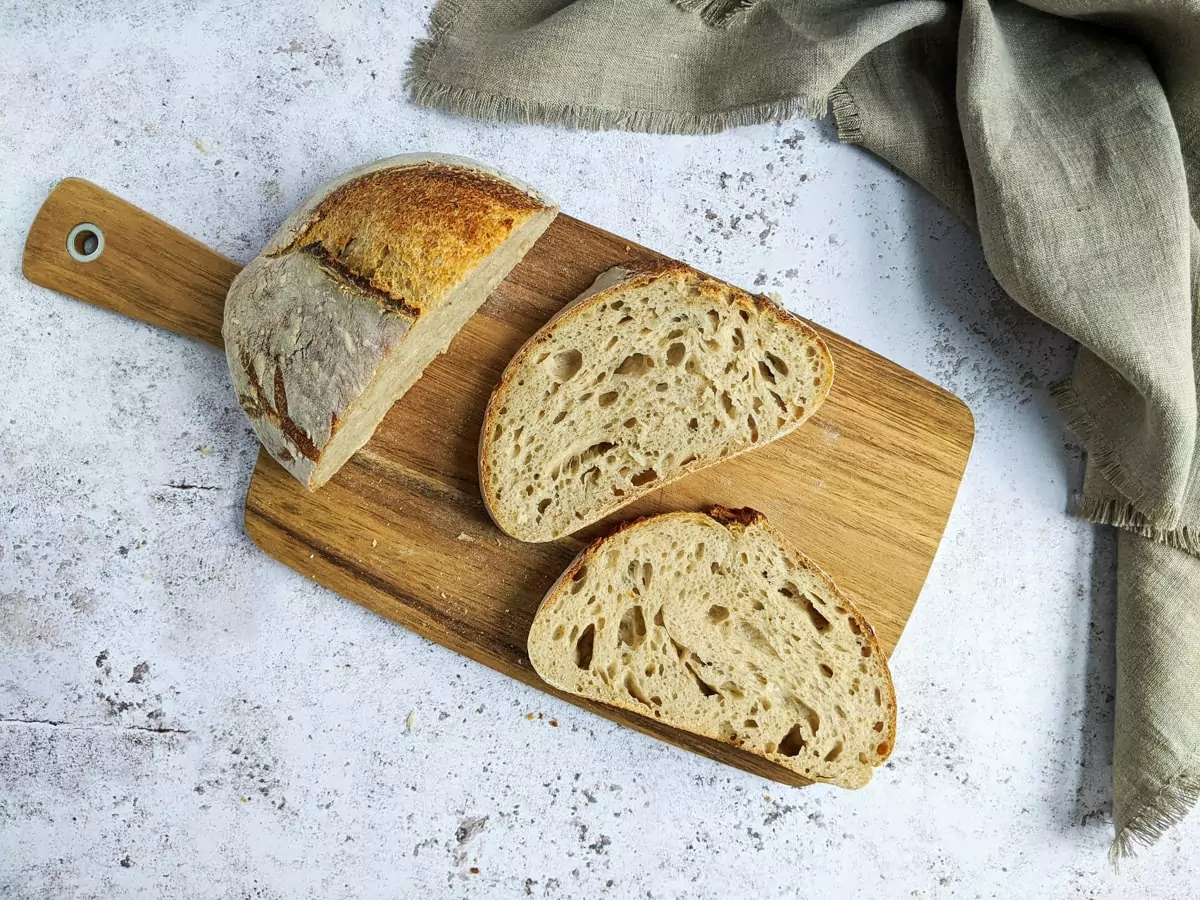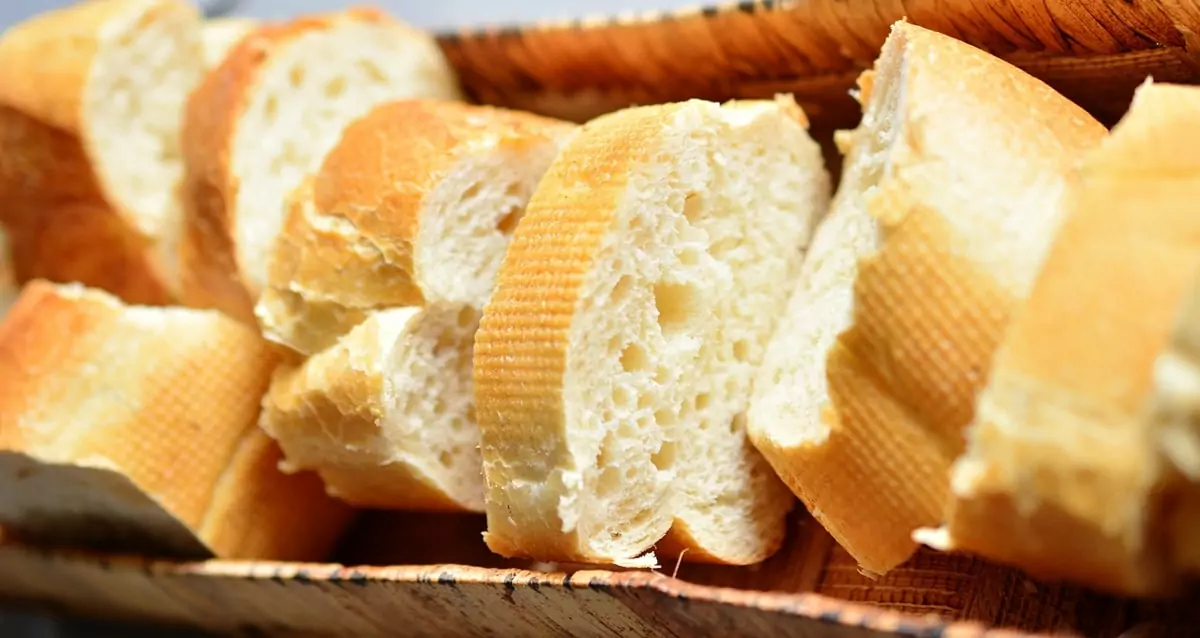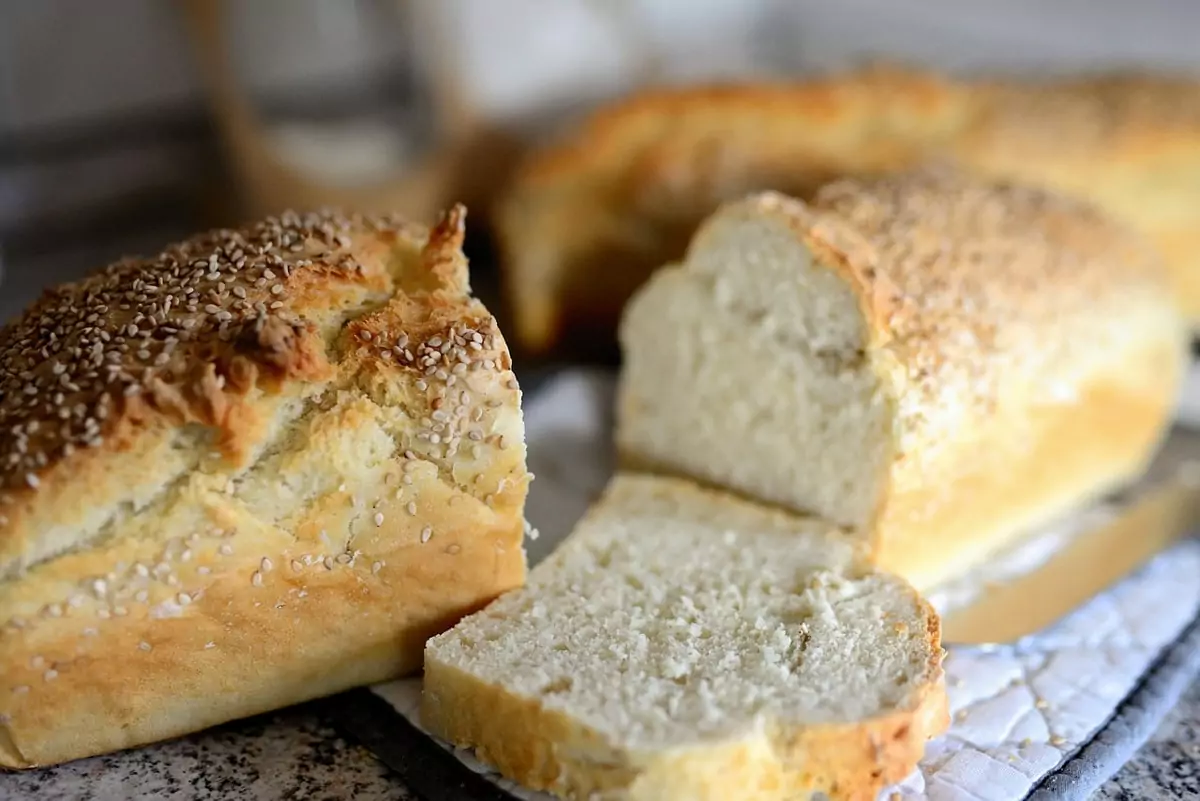In recent years, the popularity of sourdough bread has soared, often sparking debates about its merits compared to traditional white bread. While both types of bread serve fundamental dietary roles around the world, their nutritional compositions, health benefits, and fermentation processes present distinct differences. Sourdough, characterized by its unique tangy flavor and chewy texture, is not just a culinary delight but also a product of time-honored baking traditions. By contrast, white bread, often made from refined flour and commercial yeast, brings convenience but lacks some of the nutritional benefits inherent to sourdough. As more people become conscious of their dietary choices, understanding whether sourdough is truly better than white bread can help individuals make informed decisions aligned with their health and taste preferences. This article will delve into various aspects of sourdough and white bread, including nutritional comparisons, health benefits, cultural significance, and individual dietary needs.
Nutritional comparison

Sourdough
When analyzing the nutritional landscape of sourdough versus white bread, it’s crucial to note the composition differences stemming from their ingredients and preparation methods. At first glance, one might see the calories in both types of bread appearing quite similar about 93 calories per slice. However, upon closer inspection, the nuances emerge.
Comparison of Nutritional Benefits:
| Nutritional Element | Sourdough (per slice) | White Bread (per slice) |
|---|---|---|
| Calories | 93 | 93 |
| Protein | 4g | 2g |
| Fat | 0.5g | 1g |
| Carbohydrates | 14-24g | 14-24g |
| Fiber | 2g | 1g |
| Glycemic Index | 55 | >75 |
Sourdough has a stronger nutritional profile owing to its fermentation process, which lowers its glycemic index (GI). This metric indicates how quickly a food can raise blood sugar levels, which is critically important for individuals managing conditions like diabetes. By comparison, white bread tends to lead to a more rapid spike in blood sugar due to its higher GI. Essentially, choosing sourdough over white bread can be likened to selecting a slow-burning candle for a steady dim light, rather than a flashlight that might shine brightly but only briefly before it’s dulled by performance.

White Bread
Sourdough is often made from whole grain or natural flours, supplementing its nutritional credentials with fiber and micronutrients. This enriched presence of fiber aids digestion and promotes feelings of fullness. Therefore, while traditional white bread may provide the immediate satisfaction of carbohydrates, sourdough offers a more complex, nutritious alternative that gradually feeds the body and sustains energy over time.
Caloric content
While sourdough bread and white bread each have approximately 93 calories per slice, numerous factors are at play that tip the scales in favor of sourdough in more ways than just sheer numbers. Let’s consider caloric content beyond just the numbers.
Caloric Comparison:
- Sourdough Bread: A slice typically offers 93 calories with notable benefits stemming from fermentation processes.
- White Bread: While it also has 93 calories, its ingredients often lean toward refined sugars and preservatives, leading to quicker digestion.
Where Sourdough Excels in Calories

Sourdough
An important factor also involves the digestibility of sourdough thanks to its longer fermentation process. When bread ferments, the yeast breaks down gluten and other components, which can ease digestion and enhance satiety. Individuals often report feeling satisfied with fewer slices of sourdough compared to a loaf of white bread, leading to potentially reduced overall caloric intake throughout the day.
Thus, while both breads appear similar on the surface, sourdough’s nuanced advantages through fermentation and nutrition make it a compelling choice for many.
Protein and fat content
When it comes to protein and fat content, sourdough bread presents a nutritional advantage over white bread. Protein is a critical nutrient for muscle repair and maintenance, immunity, and various bodily functions. Understanding the compositions of each type of bread provides insight into the benefits each brings to our diet.
Protein and Fat Content Comparison:
| Bread Type | Protein (per slice) | Fat (per slice) |
|---|---|---|
| Sourdough | 4g | 0.5g |
| White Bread | 2g | 1g |
The Significance of Protein
Sourdough contains about 4 grams of protein per slice, making it a better option for those looking to increase their protein intake. In contrast, white bread provides only 2 grams. Protein derived from plant-based sources, such as the flour used in sourdough, is beneficial and can contribute positively to a balanced diet.
A Deeper Dive into Fat Content
When looking at fat content, sourdough has 0.5 grams per slice, while white bread stands at 1 gram. This difference may appear minimal, but for individuals monitoring their fat intake or attempting to adopt low-fat diets, these discrepancies can matter.
Quality Over Quantity in Nutrient Content
The nutritional evaluation between these breads can be summed up by considering the source of protein and fat involved. Sourdough’s fermentation process and its use of whole grains contribute to not only a higher protein count but also better digestible forms than the refined nature of white bread’s ingredients.
Considering the roles of protein and fat in one’s diet, sourdough bread becomes a more suitable choice for individuals who prioritize their nutritional quality and metabolic health.

Sourdough
Fiber and carb quality
The quality and quantity of carbohydrates and fiber found in sourdough compared to white bread emerge as key aspects when reviewing their overall health benefits. Given that vegetables, fruits, and whole grains are often prioritized in nutrition, understanding how bread stacks up in these categories becomes essential.
Fiber and Carb Quality Comparison:
| Bread Type | Fiber (per slice) | Carb Quality |
|---|---|---|
| Sourdough | 2g | Complex Carbs |
| White Bread | 1g | Simple Carbs |
Fiber’s Role in Health
Sourdough typically contains 2 grams of fiber per slice, largely stemming from the whole grain or seeded varieties used in its preparation. In contrast, white bread usually only has 1 gram of fiber due to the refining process, which strips most grains of their nutrient-dense outer layers.
When we consider fiber’s role in promoting gut health and regular digestion, the value of consuming higher fiber content is not lost on nutritionists or individuals striving for better health outcomes.
The Glycemic Index
Moreover, the quality of carbohydrates matters sourdough has a lower glycemic index (around 55), meaning its carbohydrates digest more slowly and result in less dramatic spikes in blood sugar levels when compared to white bread, which can exceed a GI of 75. The structure of the carbs in sourdough is complex, similar to how whole grains work in the body when compared to refined processed carbohydrates typical of white bread.
Conclusion on Carb and Fiber Quality
In summary, sourdough’s fiber content and carb quality position it as a more health-promoting option. With increased fiber levels and a lower glycemic index, sourdough helps to provide stable energy levels while minimizing the risk of sharp blood sugar spikes a win-win for those conscious of their dietary choices.
Health benefits of sourdough

Sourdough
Beyond its appealing crust and tangy flavor, sourdough bread boasts an array of health benefits that set it apart from white bread. Primarily attributed to its unique fermentation process, these benefits include improved digestibility, nutrient absorption, and gut health.
Summary of Health Benefits:
- Lower Glycemic Index: Sourdough typically has a lower glycemic index, making it less likely to spike blood sugar levels compared to white bread.
- Enhanced Nutrient Absorption: The fermentation breaks down harmful compounds like phytic acid, leading to higher bioavailability of minerals such as magnesium and zinc.
- Probiotic Properties: The fermentation process introduces beneficial bacteria that can improve gut health.
- Reduced Digestibility Issues: Individuals sensitive to gluten may find sourdough easier to digest, although it remains unsuitable for those with celiac disease.
Sourdough as a Nutritional Powerhouse
Consequently, while white bread provides carbohydrates, it lacks the broader health benefits offered by sourdough. Individuals seeking more than just fuel in their diets often gravitate toward sourdough due to its potential to enhance overall well-being.
Each bite of sourdough not only tantalizes the tastebuds but may also contribute to better digestive health, stable blood sugar levels, and a nourished gut microbiome.
Lower glycemic index
One of the defining advantages of sourdough bread is its lower glycemic index (GI), a critical factor for individuals concerned about blood sugar management. GI is a classification system that ranks foods based on how they affect blood sugar levels post-consumption.
Understanding Glycemic Index Values:
- Sourdough Bread: Typically falls within the range of 48-66 on the GI scale.
- White Bread: Often exceeds 75 on the GI scale.
Metabolic Impacts of Sourdough
The fermentation process involved in making sourdough bread creates organic acids that modulate glucose absorption. The presence of lactic acid during fermentation adds to its benefits by slowing the breakdown of starches into glucose, leading to a more gradual release of sugar into the bloodstream.
This slow release resembles a well-timed release of energy, contrary to the quick uptick that comes with white bread, which can create volatility in blood sugar, leaving individuals feeling fatigued shortly after consumption.
Response Variability in Individuals
While many studies support sourdough’s lower GI as beneficial, it’s also worth noting that individual responses can vary widely. Some individuals might still experience elevated blood sugar levels from consuming sourdough, albeit typically less than those from white bread.
Conclusion on Glycemic Effects
In essence, sourdough’s lower glycemic index not only appeals to those striving for balanced blood sugar levels but adds another layer to its reputation as a healthier alternative to white bread. With a growing body of evidence supporting these benefits, sourdough emerges as an attractive option for individuals dedicated to better health management.
Improved nutrient absorption
The nutritional advantages of sourdough bread extend prominently to its ability to enhance nutrient absorption. Through its distinctive fermentation process, sourdough saves the day for nutrient-hungry bodies.
The Role of Phytic Acid
Phytic acid, often found in grains and seeds, can bind minerals like magnesium, iron, and calcium, leading to reduced absorption during digestion. The longer fermentation times used in sourdough preparation help mitigate these effects.
The Fermentation Magic
During fermentation, beneficial microorganisms, specifically lactic acid bacteria, decrease the pH of the bread. This reduction in pH effectively deactivates phytic acid, rendering the minerals within the bread more absorbable and bioavailable to the human body.
What This Means for Nutrient Intake: By consuming sourdough bread, individuals may experience improved absorption of essential nutrients compared to white bread, where nutrients are often locked away due to the refining process.
Nutrient Density Comparison
Sourdough bread, particularly when made from whole grain, is rich in essential vitamins and minerals. The process enhances not only the bioavailability of nutrients but also presents an array of additional vitamins, including B vitamins such as folate and niacin.
Conclusion on Nutrient Absorption
Thus, it becomes apparent that sourdough bread does not merely fill one’s stomach; it enriches one’s nutritional intake. It can transform a simple meal into a vehicle for better health a stark contrast to white bread, which may facilitate consumption but scarcely delivers profound benefits.
Antioxidant properties
Sourdough bread possesses remarkable antioxidant properties, further favoring its position against white bread in the quest for better health. The antioxidant levels in food are essential in combatting oxidative stress and inflammation, both of which have ties to chronic diseases.
Fermentation and Health Boost
The fermentation process employed in sourdough baking not only aids in the breakdown of gluten but also augments the levels of antioxidative compounds, such as phenolic acids, significantly more than what you’d find in commercial white bread.
An Overview of Antioxidant Benefits:
- Oxidative Stress Reduction: Antioxidants neutralize free radicals, lowering the risk of diseases like heart disease, Type 2 diabetes, and certain cancers.
- Enhanced Health Markers: Individuals consuming whole grain sourdough may see improvements in biomarkers of health, such as cholesterol levels and inflammatory markers.
Comparing Antioxidant Levels
- Sourdough Bread: Exhibits elevated levels of antioxidants due to its fermentation process.
- White Bread: Generally lacks the antioxidative benefits due to the lower levels of bioactive compounds.
Conclusion on Sourdough’s Antioxidative Strengths
As a result, enjoying a slice of sourdough bread becomes more than just satisfying a carb craving; it translates into an opportunity for boosting health and wellness through rich levels of antioxidants and phytonutrients benefits scarce in standard white bread.
Digestive health
When it comes to digestive health, sourdough bread shines brightly against the backdrop of modern diets, often plagued by processed options like white bread. Through unique fermentation processes, sourdough promotes gut health in remarkable ways.
Prebiotics and Gut Microbiome
Sourdough bread is a standout when it comes to being a source of prebiotics fibers that fuel beneficial gut bacteria. The presence of these prebiotic fibers enhanced during fermentation supports a flourishing gut microbiome, which is vital for digestion and overall health.
Sourdough vs. White Bread in Digestibility

White Bread
- Sourdough Bread: Introduces beneficial bacteria and helps break down complex carbohydrates, making it easier to digest.
- White Bread: Often lacks fiber and whole components, resulting in quicker digestion and potential bloating or discomfort for individuals with sensitivities.
Improved Digestive Efficiency
Furthermore, the fermentation process assists in reducing gluten levels and enhancing the bioavailability of nutrients, empowering individuals to absorb nutrients more efficiently than when consuming white bread.
Conclusion on Digestive Benefits
Given these attributes, sourdough emerges as a superior choice for individuals seeking better digestive health. It could be viewed as the tortoise versus the hare of the bread world taking its time through fermentation for a more profound and sustainable health impact.
Prebiotic benefits
Sourdough bread acts as a source of prebiotics, supporting both digestive health and the gut microbiome’s resilience. Prebiotics are substances that promote the growth of beneficial microorganisms in the intestines, crucial for maintaining a balanced gut flora.
The Role of Prebiotics in Sourdough
Through its fermentation process, sourdough bread facilitates the development of prebiotic fibers, which the body doesn’t digest but are instead food for gut bacteria. By consuming sourdough, you actively encourage a thriving community of beneficial bacteria that plays an instrumental role in promoting health.
Comparison to White Bread
When compared to white bread, which tends to be lower in fiber and nutrients due to the refining process, sourdough stands tall in terms of prebiotic benefits. It’s the difference between planting a garden and scattering seeds on a barren landscape.
Digestive Efficiency
The impacts of prebiotics found in sourdough include improved digestion, enhanced immune function, and even potential mood stabilization due to gut-brain communication. This sets sourdough apart as not merely bread but as a dietary ally.
Conclusion on Prebiotic Benefits
By embracing sourdough, one invites a powerhouse of benefits through prebiotics that aid overall well-being. Those choosing this bread are investing in nurturing their gut health a profoundly important choice amidst our bustling lives.
Gluten content
When discussing the topic of gluten, it’s essential to recognize the context surrounding sourdough and white bread. Gluten intolerance concerns have grown in today’s health-conscious society, rendering the conversation around gluten content in these bread types critical.
The Nature of Gluten in Sourdough
Sourdough bread isn’t gluten-free; however, the fermentation process employed during its creation can alter the gluten structure. Wild yeasts and lactobacilli present in the sourdough starter break down gluten somewhat, which may make sourdough more tolerable for individuals with mild sensitivities not to mention more easily digestible.
Contrasting with White Bread

White Bread
Conversely, white bread features gluten derived from refined wheat flour that hasn’t undergone any fermentation. This gluten remains largely intact, potentially leading to digestive issues in those who are sensitive to gluten or suffer from conditions like celiac disease.
Individual Reactions to Gluten
However, it is crucial to clarify that individuals with celiac disease should avoid sourdough entirely. While its fermentation may alter gluten, even minuscule amounts can lead to serious health repercussions.
Conclusion on Gluten Content
Thus, while sourdough may present itself as a more digestible alternative to white bread for some, it remains imperative for those with gluten sensitivity to approach with caution. For everyone else, it might provide a gentle introduction to gluten without unnecessary discomfort.
Fermentation effects
The effects of fermentation are central to unraveling why sourdough is typically viewed as superior to white bread. The fermentation process utilizes natural yeasts along with lactic acid bacteria, culminating in a myriad of health benefits that white bread simply cannot match.
The Fermentation Process Breakdown
- Probiotic Formation: The wild yeasts and bacteria in sourdough create a unique ecosystem during fermentation, producing beneficial probiotics which are essential for gut health. By consuming sourdough, individuals bring home these probiotics that can positively impact digestion and nutrient absorption.
- Digestive Aid: This fermentation process aids in breaking down complex carbohydrates and gluten, ultimately making sourdough bread easier to digest compared to traditional white bread, which lacks this microbial activity.
- Nutrient Accessibility: The fermentation stage also improves the bioavailability of minerals and vitamins, translating to ease of nutrient absorption. In stark contrast, white bread often loses this potential during its rapid production.
The Benefits of Fermentation
Through the lens of fermentation, sourdough is transformed from mere dough into a living, breathing entity that not only nourishes but also nurtures one’s health. It embodies the idea that the preparation of food can be as beneficial as the food itself.
Conclusion on Fermentation
In summary, fermentation enriches sourdough with probiotics, easy digestibility, and enhanced nutrient availability, making it a healthful option that stands tall against white bread’s rapid but hollow offerings. It showcases how taking a bit of extra time in preparation can yield remarkable health benefits something that should not be overlooked in the fast-paced modern world.
Sourdough vs. white bread in blood sugar levels

White Bread
Blood sugar management is a significant concern for many health-conscious individuals and those with diabetes. When weighing the options of sourdough and white bread, sourdough’s impact on blood sugar levels shines brightly.
Blood Sugar Dynamics
- Glycemic Index Comparisons: Where sourdough might stand around 55 on the glycemic index (GI), white bread often exceeds 75. This difference is pivotal in how these breads affect blood glucose after a meal.
- Carbohydrate Structure: The fermentation in sourdough leads to a slower carbohydrate breakdown, resulting in a gradual release of glucose into the bloodstream. This slow absorption contrasts sharply with the rapid spikes often caused by consuming white bread.
- Overall Blood Sugar Regulation: Sourdough’s lower GI means that individuals may experience fewer peaks and valleys in blood sugar levels, promoting more stable blood glucose throughout the day.
Conclusion on Blood Sugar Level Effects
By prioritizing sourdough over white bread, individuals are likely to cultivate a better environment for blood sugar regulation, showcasing its efficacy as not just a culinary option, but also as a valuable component of a health-conscious diet.
Impact on insulin response
The implications of sourdough bread extend further into how it affects insulin response compared to white bread. Understanding this relationship is essential for those monitoring their insulin levels and overall metabolic health.
Insulin Sensitivity Explained
Sourdough bread generally yields a lower insulin response than white bread. This can be attributed to the fermentation processes that reduce the rapidity with which the body absorbs and metabolizes sugars.
Key Factors:
- Stable Blood Sugar Levels: The slower glucose release associated with sourdough means that less insulin is required to transport glucose into cells, promoting better insulin sensitivity and less strain on the pancreas.
- Overall Metabolic Response: Numerous studies indicate that those consuming sourdough may witness a significantly lower postprandial (after meal) insulin spike compared to those eating white bread. This helps mitigate the risk of developing insulin resistance, a critical factor in managing conditions such as Type 2 diabetes.
Conclusion on Insulin Impact
Thus, sourdough emerges as not only a tastier bread choice, but one that yields profound benefits in terms of insulin regulation. Individuals focused on long-term health may find sourdough a more harmonious partner in their diets.
Blood sugar management in diabetics
For individuals living with diabetes, the choice between sourdough and white bread is more than a matter of taste; it becomes a significant factor in blood sugar management.
The Sourdough Advantage
- Glycemic Control: Sourdough’s low glycemic index equates to a more manageable blood sugar response post-consumption. It allows individuals with diabetes to maintain steadier blood sugar levels without dramatic spikes, which can lead to complications over time.
- Feeling Full: The higher fiber content in sourdough coupled with its complexity can provide longer-lasting satiety. Many diabetic patients report feeling full for longer periods after consuming sourdough, reducing the temptation to snack on additional high-carb foods.
- Enhanced Nutrient Absorption: Improved nutrient absorption through sourdough can aid overall metabolic functions, providing individuals with the necessary building blocks for effective energy production and stress management, important for those navigating diabetes.
Conclusion on Diabetic Management
In summary, sourdough can serve as a strategic choice for those with diabetes a food that aligns with their health goals while satisfying their dietary preferences.
Potential risks
While sourdough bread holds numerous health advantages over white bread, potential risks are also worth considering. Understanding these nuances can help individuals make more informed choices regarding their diets.
Gluten Intolerance Considerations
Sourdough may be appealing due to its digestibility, but for those with celiac disease or gluten sensitivity, it poses inherent risks. Even though the fermentation process can reduce gluten’s intensity, sourdough remains unsuitable for individuals with celiac disease.
Individual Responses
Additionally, gluten sensitivity can vary from person to person. What may be tolerated well by one individual could pose significant challenges for another. Careful monitoring of reactions to sourdough and consulting with medical professionals is advisable.
Cross-Contamination Issues
Cross-contamination during the production of bread can also pose risks, particularly for gluten-sensitive individuals. Those consuming artisanal sourdough should source products verified to meet gluten-free standards.
Conclusion on Potential Risks
Ultimately, while sourdough presents numerous benefits, individuals must remain cautious, particularly those with gluten sensitivities. Fully understanding personal dietary needs and limitations can help mitigate potential risks associated with consuming sourdough.
Contamination concerns
When discussing bread choices, contamination concerns serve as a vital element in the overall health equation. Both sourdough and white bread can carry risks related to gluten and other ingredients used in production.
Cross-Contamination Risks
Issues arise when gluten-free breads are produced in environments shared with gluten-containing ingredients. For individuals with celiac disease, even minute traces can trigger adverse reactions.
Quality of Ingredients
Moreover, the quality of ingredients used in both sourdough and white bread varies widely. The potential for additives, preservatives, and hidden gluten sources underscores the importance of reading labels carefully and selecting reputable brands committed to quality.
Conclusion on Contamination Concerns
Ensuring food safety requires a comprehensive understanding of sourcing and production practices. While sourdough is often celebrated for its health benefits, mindful choices remain integral to maintaining overall well-being.
Cultural and historical significance
Bread is often viewed as a universal staple, but sourdough’s deep-rooted history and cultural richness elevate it to something far more significant than mere sustenance. The story of sourdough is one of community, tradition, and continuity.
The Ancient Origins of Sourdough
Tracing its origins back to ancient civilizations, sourdough has been produced for thousands of years. In ancient Egypt, workers harnessed the power of spontaneous fermentation, creating the thick and tangy bread that would lay the foundation for countless cultures to follow. Over centuries, sourdough didn’t just serve as nourishment; it formed a cultural thread that interwove with the identities of nations and communities.
A Symbol of Tradition
From France’s “Le Pain au Levain” to San Francisco’s unique sourdough culture, this bread is more than a meal. It embodies shared stories, recipes passed down through generations, and connections to the land. Sourdough baking exemplifies taking care in food production emphasizing artisanal skills and local ingredients.
Contrasting White Bread Culture
In contrast, the rise of white bread often mass-produced spoke to industrial advancements and convenience at the expense of tradition. While it satisfied a quick need, it lacked the soul, flavor, and sense of place inherent in sourdough.
Conclusion on Cultural Importance
In many ways, sourdough represents the intersection of gastronomy and culture, serving as a testament to the evolution of food within human society. This context highlights that every slice of sourdough tells tales of artisanal practices, community bonds, and culinary heritage, reaffirming its superiority over more homogenized breads like white bread.
Traditional baking methods
Exploring traditional baking methods, particularly for sourdough, reveals an intricate world where science blends with art. The preparation of sourdough often takes longer than standard white bread due to careful attention to fermentation processes and baking techniques.
- Cultivating the Starter: A sourdough starter is a living culture, requiring continual feeding and nurturing. It introduces wild yeast and bacteria into the dough, allowing natural fermentation, and resulting in unique flavor profiles.
- Long Fermentation: Unlike white bread, sourdough dough is allowed to ferment for hours, or even overnight. This slow fermentation process develops the dough’s flavor and structure while enhancing nutritional properties.
- Artisanal Craftsmanship: The meticulous process of shaping and scoring the dough before baking showcases an artisan’s skills. This craftsmanship produces a final loaf that embodies care and tradition, evident in its distinctive crust and open crumb structure.
Conclusion on Traditional Methods
These methods serve as a testament to the care required in sourdough production. The difference between artisanal baking and mass-produced bread extends beyond taste it speaks to the values underpinning culinary practices and quality that individuals increasingly appreciate.
Modern trends and popularity
Sourdough’s resurgence in contemporary society signals a collective movement towards health-conscious eating. Driven by the need for wholesome, natural foods, more people are flocking to sourdough as a healthier alternative to refined white bread options.
A Global Culinary Revival
The trend has gained traction through platforms like Instagram and TikTok, where home bakers enthusiastically share their sourdough journeys. This renewed interest reflects society’s understanding of food and its preparation, emphasizing a return to traditional, healthful practices.
Community Engagement and Sharing
During the COVID-19 pandemic, the act of baking sourdough became demonstrative of more than just cooking; it signified connection and creativity. Sharing homemade sourdough became a way to engage with family and friends virtually, cultivating a sense of belonging during challenging times.
Conclusion on Modern Trends
The rise in sourdough’s popularity captures a nuanced pursuit of culinary excellence and wellbeing. As more individuals choose to embrace healthier diets anchored in tradition, sourdough is positioned solidly within that narrative a staple connecting the past with modern health-conscious eating.
Conclusion: Personalization of bread choices
In the end, the question of whether sourdough is better than white bread is deeply tied to personal preferences, dietary needs, and unique health considerations. While it is overwhelmingly apparent that sourdough offers numerous nutritional advantages such as a lower glycemic index, enriched nutrients, improved digestibility, and a wealth of cultural heritage it’s essential to recognize that individual reactions to different bread types can vary widely.
Choosing the right bread often involves a holistic understanding of one’s health needs, lifestyle challenges, and taste preferences. For some, sourdough becomes a versatile companion that satisfies cravings while providing health benefits. For others, nutritional choices may necessitate alternatives due to dietary restrictions.
Embracing Personal Journeys
As society embraces a deeper awareness of food choices, the conversation around sourdough and white bread serves as an excellent reminder that food is a personal journey marked by individual experiences, both health-related and emotional. Ultimately, being informed about the context, nutritional benefits, and culinary practices surrounding bread empowers individuals to make decisions that resonate with their unique lifestyles.
By understanding these dynamics, whether opting for a slice of artisan sourdough or a classic piece of white bread, individuals can navigate their culinary path positively, resulting in a relationship with food that promotes both satisfaction and well-being.

